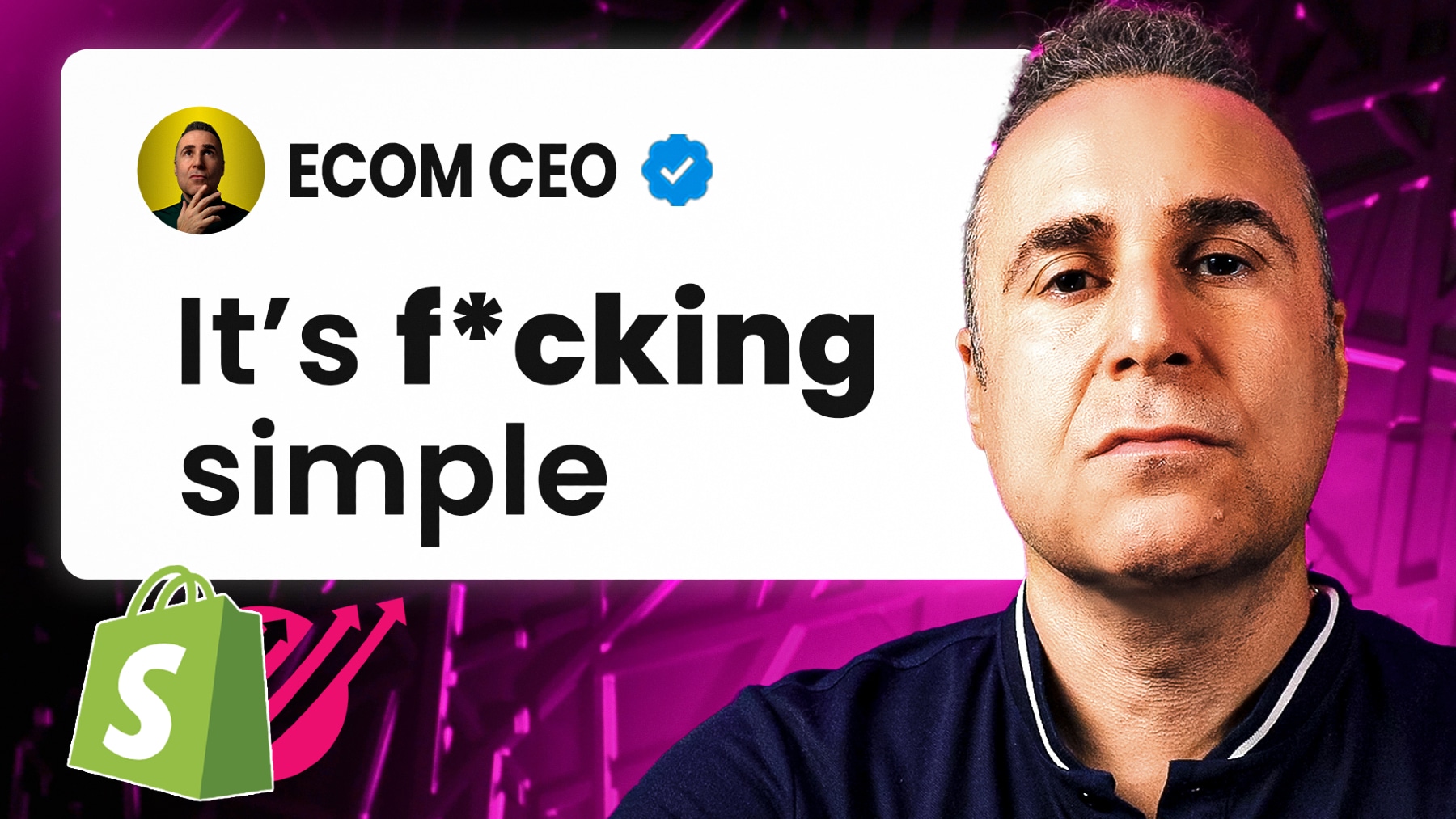The Psychology Behind Winning Products – Why Customers Love Them
Contents

Understanding the “winning products psychology” is crucial for your business if you are to capture your audience and drive sales. This is because buying behaviors tend to be fairly consistent and by tapping into what influences the brain’s purchasing decisions, you can convert more of your leads into prospects.
At its core, product psychology taps into the science of human behavior to craft irresistible offerings that customers can’t resist. This involves leveraging consumer psychology, pricing strategies, and psychological triggers to influence purchasing decisions.
To help you pick the right products for your store, we crafted this guide that explores the winning products psychology and other aspects, such as why people buy things, and tools like Sell The Trend that can help you find such products within minutes.
Key Takeaways
- Why do people buy things
- How psychological principles influence purchasing decisions
- Pricing strategies and the psychology of value
- Examples of psychological principles in action
Why People Buy Things

Understanding why people buy things is fundamental to designing or selecting successful products and marketing strategies. Of course, if you are not into manufacturing or custom-made products, that means finding winning products that customers love.
Several factors drive purchasing behavior, and they include:
1. Emotional Triggers
Emotions have a massive influence on purchasing decisions. People often buy products that make them feel good, solve a pain point, or lift their self-esteem.
For example, luxury goods are often marketed as status symbols, which appeal to a consumer’s desire for recognition and exclusivity. Rarity is a great selling point, particularly when it comes to luxury products.
2. Perceived Value
Customers are more likely to purchase products that they perceive as offering more value compared to competing products. This could be in terms of quality, price, or unique features.
Companies that communicate their product’s value proposition often succeed in capturing consumer attention. If you stock these kinds of products in your store, you are likely to enjoy better sales volumes.
3. Social Influence

People often make purchasing decisions based on what others around them are buying. Social proof, endorsements, and even the fear of missing out (FOMO) can strongly influence behavior, particularly in online store environments.
This means people are likely to want to check out what others think of a particular product or an online store before making a purchase.
4. Convenience
Consumers prioritize ease of use and accessibility. This means that products or services that simplify life their lives or save time are particularly appealing to the vast majority of consumers.
For example, subscription-based models have become quite popular in recent times because they eliminate the need for repeated decision-making. Therefore, you should always aim to create this kind of experience for your potential customers.
5. Cognitive Biases
Cognitive biases, such as the anchoring effect (where the first piece of information influences perception) or the scarcity effect (perceived rarity increases value), are often leveraged in marketing to influence decision-making processes.
By understanding these factors, businesses can create products and marketing campaigns that align with the underlying motivations of their target audience, driving sales and fostering long-term loyalty.
How Psychological Principles Influence Purchasing Decisions

Psychological principles like cognitive biases, confirmation bias, and habit formation shape the decision-making process, often within just a few seconds of encountering a product. Therefore, winning products usually appeal to deep-seated psychological needs and desires.
These principles guide how consumers perceive value, solve problems, and ultimately make purchasing decisions. For example, companies like Apple and Nike have mastered the art of connecting their products to their brand identity, fostering brand recognition that keeps customers coming back.
By creating a strong emotional connection and building trust, these companies ensure their products remain top-of-mind for consumers.
The Power of Social Proof
Social proof is a critical psychological trigger. It reinforces the perception of a product’s value since potential customers often trust reviews, ratings, and testimonials to validate their purchasing decisions. When people see others endorsing a product or service, it creates a sense of reliability and reduces hesitation.
According to the Harvard Business Review, products with visible positive feedback are significantly more likely to gain traction and succeed. This phenomenon is amplified in online store environments, where user-generated content such as reviews and unboxing videos can strongly influence purchasing behavior.
Cognitive Biases at Work
Cognitive biases like the scarcity effect (fear of missing out) and the anchoring effect (relying on the first piece of information encountered) also play a significant role. Marketers often use limited-time offers or highlight original prices alongside discounted ones to activate these biases, nudging customers toward making a purchase.
Pricing Strategies: The Psychology of Value

One of the most effective tools in product psychology is pricing. Understanding how pricing works and leveraging techniques like odd pricing and charm pricing can dramatically influence consumer behavior.
For instance, setting a price at $19.99 instead of $20 exploits a cognitive bias where consumers perceive the product as more cost-effective and become more likely to buy it.
Odd Pricing and Charm Pricing
Odd pricing, where prices end in odd numbers like 7 or 9, creates the illusion of a good deal. Charm pricing, which uses the number 9, is particularly effective at driving sales. These strategies tap into the customer’s mind by subtly signaling value and affordability, which can make the difference between a purchase and hesitation.
Research has shown that charm pricing can increase sales by up to 24%, as consumers perceive these prices as significantly lower than rounded numbers.
The Decoy Effect

The decoy effect is another pricing strategy that significantly guides customer decisions. By introducing a third, less appealing option (the decoy), businesses can steer customers toward the more profitable choice.
For example, if a streaming service offers a basic option for $10, a standard option for $15, and a premium option for $16, most consumers will perceive the premium option as offering more value. This technique not only increases the perceived worth of the higher-priced item but also simplifies the decision-making process for the consumer.
The Role of Free Offers
Free offers can be incredibly powerful in shaping consumer behavior. Offering something for free reduces the perceived risk of trying a product and creates a sense of goodwill toward the brand. For example, businesses often use free trials or free shipping to lower barriers to entry and encourage customers to commit.
Creating and Selecting Products That Resonate With Customers
To create or find products that resonate, businesses must address customer pain points and provide solutions that are intuitive and satisfying.
This involves:
- Conducting thorough market research to identify what potential customers want.
- Understanding the consumer’s decision-making process to align product features with their desires.
- Highlighting the benefits of the product in a manner that simplifies the purchasing decision.
Leveraging Brand Identity and Recognition

A strong brand identity reinforces the emotional connection between the product and its users. Companies that invest in brand recognition often find it easier to attract new customers and retain existing ones. Consistency in messaging, visual design, and customer experience plays a critical role in building trust and loyalty.
The Role of Psychological Triggers in Product Adoption
Product adoption hinges on the ability to activate psychological triggers that make products irresistible. From habit formation to leveraging limited-time offers, businesses can nudge customers toward their products.
Here are some strategies:
Habit Formation
Winning products often become a part of customers’ daily routines. This is achieved by making the product easy to use, offering consistent value, and reinforcing usage with rewards or incentives.
Creating a Sense of Urgency
Using psychological triggers like “limited time only” or “while supplies last” motivates consumers to act quickly. These tactics leverage the fear of missing out (FOMO) and drive sales by encouraging immediate purchasing decisions.
Examples of Psychological Principles in Action
Apple: Simplicity and Exclusivity

Apple’s success is rooted in its ability to create products that feel exclusive and essential. By offering a basic option with premium upgrades, they capitalize on the decoy effect while emphasizing brand identity.
Apple’s stores and marketing campaigns also focus on simplicity, ensuring customers perceive their products as user-friendly and elegant.
Amazon: Social Proof and Good Deals

Amazon’s “Best Seller” and “Customers Also Bought” features showcase how social proof drives purchasing decisions. Their use of odd pricing reinforces the perception of cost-effectiveness, while limited-time deals encourage impulsive purchases. Additionally, Amazon’s seamless checkout process and free shipping options contribute to its reputation for convenience and value.
Starbucks: Habit Formation and Brand Identity

Starbucks uses habit formation by encouraging repeat purchases through its rewards program. Their strong brand identity and consistent quality have made them a daily ritual for millions of customers worldwide. By creating a sense of community and exclusivity, Starbucks ensures long-term customer loyalty.
Netflix: The Decoy Effect in Subscriptions
Netflix effectively employs the decoy effect in its subscription pricing. With a basic plan that lacks many features and a slightly higher-priced premium plan, they make the mid-tier standard plan the most attractive choice for users. This strategy simplifies decision-making while steering users toward the desired option.
McDonald’s: Anchoring and Upselling
McDonald’s frequently uses anchoring and upselling techniques, such as promoting meal combos as better deals compared to individual items. This influences customers to perceive more value in purchasing a combo, often leading to higher sales.
Limited-Edition Collaborations: Scarcity and Exclusivity
Brands like Supreme and Nike leverage the scarcity effect by releasing limited-edition products. The perceived rarity and exclusivity of these items drive demand and encourage immediate purchases. This strategy not only generates buzz but also solidifies the brand’s image as trendy and desirable.
How Sell The Trend Can Help Your Dropshipping Business
Sell The Trend is a unique tool for aspiring and established dropshippers looking to identify winning products and streamline their operations.

By using advanced analytics, trend tracking, and a user-friendly interface, Sell The Trend can help you identify products that resonate with your target audience.
Here’s how it can help you set up your online store for success:
Identifying Winning Products
Sell The Trend uses AI-driven insights to highlight trending and high-demand products in various niches. By analyzing consumer behavior and market trends, it ensures your online store will always be ahead of the curve.
Seamless Store Integration
With one-click product import functionality, you can easily add trending items to your online store and save loads of time and effort. This feature also simplifies inventory management and ensures your store remains stocked with the best products at all times.
Enhanced Market Research
The platform provides valuable market research tools that allow you to analyze competitors, understand pricing strategies, and identify potential pain points in your target niche.
Automated Product Listings
Sell The Trend automates the process of creating compelling product listings, complete with optimized descriptions and images. This ensures your products are presented in the best possible light, attracting more potential customers.
Social Proof and Analytics
Sell The Trend helps you leverage social proof by identifying products with strong customer reviews and positive feedback. Its analytics tools allow you to track performance and make data-driven decisions.
Scalability and Support
Whether you’re just starting or looking to scale, Sell The Trend provides the resources and support needed to grow your business. From product sourcing to marketing tips, it’s a comprehensive solution for dropshippers.
By integrating Sell The Trend into your operations, you can build a successful dropshipping store, identify products that drive sales, and stay ahead in what has become a hyper-competitive eCommerce world.

FAQs on Winning Products Psychology
1. What is the product theory of psychology?
The product theory of psychology explores how psychological principles influence customer behaviors, preferences, and purchasing decisions. It involves understanding how cognitive biases, emotional connections, and social factors impact a product’s success.
2. How to use psychology to build better products?
To build better products, businesses can:
- Conduct market research to understand customer pain points and desires.
- Use pricing strategies like charm pricing and the decoy effect to enhance perceived value.
- Leverage social proof and brand identity to build trust and loyalty.
- Design products that align with customer habits and decision-making processes.
3. What is an example of a psychological pricing product?
An example of psychological pricing is Netflix’s subscription tiers. They use the decoy effect by offering different prices; a basic option, a standard option, and a premium option, that often steers most users toward the standard or premium plans by showcasing their superior value compared to the basic tier. This is a good example of using marketing psychology to influence the customer’s mind.
Final Thoughts
The psychology behind winning products is a fascinating interplay of consumer behavior, marketing strategies, and cognitive biases. By understanding how pricing works, leveraging psychological triggers, and building strong brand recognition, businesses can create products that not only capture attention but also foster loyalty and drive sales.
Whether through charm pricing, social proof, or habit formation, the right psychological principles can transform a product from ordinary to extraordinary in the eyes of customers.

Start your free trial of Sell The Trend today.








